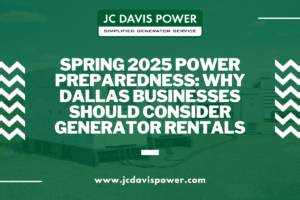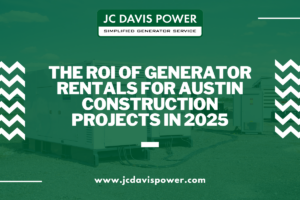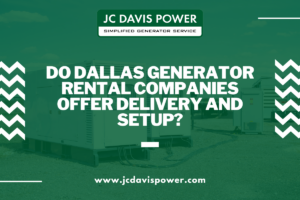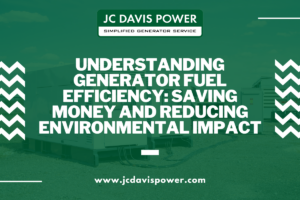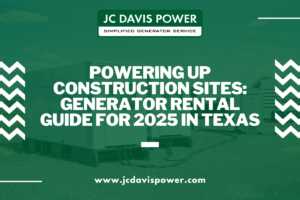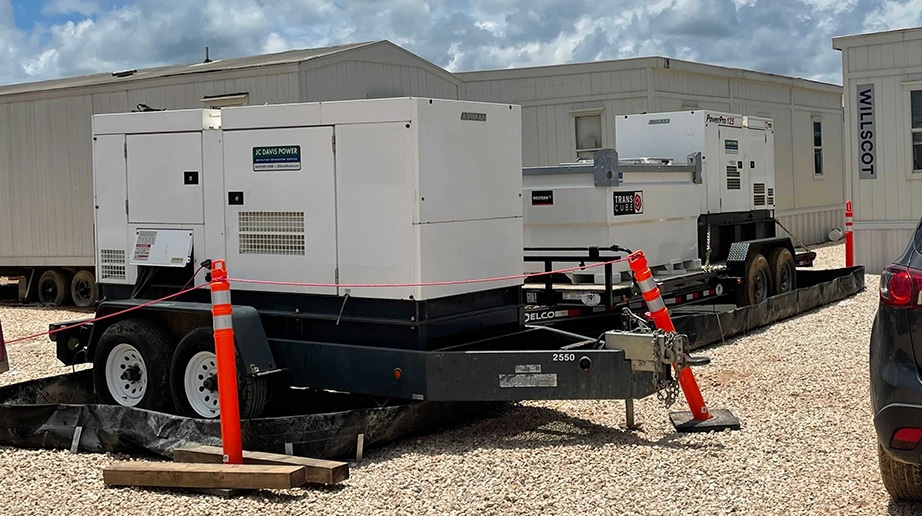
Construction sites can generate high noise levels that disturb surrounding neighborhoods. Operating heavy machinery like excavators, jackhammers and power tools creates loud, intermittent bursts of noise. Generators used to supply electricity to jobsites also produce sustained droning sounds.
Excessive noise exposure raises health concerns like hearing loss and cardiovascular issues for construction crews. It can also degrade quality of life for nearby residents. Noise regulations enforced by local authorities restrict allowable decibel limits for builders.
Switching to Tier 4 emissions compliant mobile generators provides an effective method to limit noise pollution at construction projects. Let’s examine why Tier 4 generators run quieter along with other sound reduction techniques.
What Makes Tier 4 Generators Quieter
Tier 4 refers to the latest EPA emissions standard for diesel engines. It mandates stricter limits on particulate matter (PM) and nitrogen oxides (NOx) released in generator exhaust.
Meeting Tier 4 requirements involves improvements like:
- High-pressure common rail fuel injection
- Variable geometry turbochargers
- Diesel particulate filters
- Selective catalytic reduction
These technologies optimize combustion efficiency for cleaner emissions. They also reduce overall noise levels produced by the engine and exhaust.
Tier 4 generators feature advanced sound attenuation methods to reduce noise pollution and disturbances. Some of the key techniques used include:
Fully Enclosed Weatherproof Casings
- The engine, alternator, and other components are housed within durable steel or aluminum casings that are lined with acoustic insulation foam or fiberglass.
- Doors seal tightly with gaskets and latches to contain noise when closed. This allows generators to be safely operated near hospitals, offices, homes, and noise-sensitive areas.
Low-Noise Cooling Systems
- Special high-efficiency axial fans, air ducts, and louvers channel airflow for optimal generator cooling while minimizing sound.
- Strategically placed cooling air inlets and outlets reduce fan noise escaping the enclosure.
Hospital-Grade Exhaust Silencers
- One or more extra-large residential-grade mufflers are installed on the exhaust system to dampen engine noises.
- Glass pack silencers containing sound-absorbing fiberglass baffles further reduce radiated noise. This allows operation near hospitals.
Low-Speed Fan Settings
- Variable speed fans coupled with smart control systems adjust cooling fan speed based on load. This reduces excessive airflow noise during light loads.
Sound-Absorbent Barriers
- Acoustic barriers made of noise-dampening composite materials or mass loaded vinyl surround the generator.
- Some models include modular or tip-over style barriers to facilitate maintenance access.
With implementation of all these noise reduction technologies, Tier 4 generators can operate at noise levels as low as 60 dBA at 23 feet. This allows flexible placement even in urban locations and noise-critical applications. Proper site planning is still essential for minimizing community impacts.
How Much Quieter Are Tier 4 Generators?
Tier 4 generators can operate at noise levels over 50% lower than Tier 2 or 3 models. Actual sound reductions depend on the generator size and load.
For example, a 500 kW Tier 2 generator produces 95 dBA of noise at full load. An equivalent Tier 4 model outputs just 73 dBA — a difference of 22 decibels.
That’s a huge reduction equivalent to making the generator sound 4 times quieter to the human ear.
Here’s a chart comparing typical noise levels for different tiers and generator sizes:
| Generator Size | Tier 2 Noise Level | Tier 4 Noise Level | Sound Reduction |
|---|---|---|---|
| 500 kW | 95 dBA | 73 dBA | – 22 dbA |
| 300 kW | 90 dBA | 68 dBA | – 22 dbA |
| 200 kW | 87 dBA | 65 dBA | – 22 dbA |
| 100 kW | 83 dBA | 63 dBA | – 20 dbA |
Supplemental Sound Attenuation Methods
Tier 4 generators provide major noise reduction on their own. Additional steps can further minimize sound pollution:
- Sound Enclosures: Place the generator inside a secondary acoustic enclosure to block noise escaping from the cabinet. Enclosures use sound-absorbing materials and air vents with mufflers.
- Exhaust Silencer Extensions: Increase the length of the exhaust system with extra silencers to dissipate noise.
- Acoustic Barriers: Surround generators with portable noise barrier walls. Use sound curtains installed on chain link fencing.
- Buffer Zones: Position generators far from noise-sensitive areas. Every doubling of distance reduces noise by 6 decibels.
- Load Management: Avoid prolonged operation at full power. Run multiple smaller generators at partial loads to limit noise.
- Routine Maintenance: Check and replace worn generator parts that increase sound like fans, mufflers and insulation.
- Noise Monitoring: Use sound level meters to identify noise hotspots and verify compliance with regulations.
Proper placement, barriers and load management can cut perceived noise by 50% or more. Combining these strategies with Tier 4 generators effectively minimizes construction noise issues.
The Bottom Line
Upgrading to modern Tier 4 mobile generators provides the most convenient method to reduce noise pollution at jobsites. Their advanced sound attenuation technology significantly lowers dBA levels. Supplemental noise mitigation steps can decrease sound even further.
Noise limitations don’t need to restrict construction activities with the right equipment. JC Davis Power’s rental inventory offers premium Tier 4 sound-controlled generators from 200 to 600 kW. Contact our generator experts to find an efficient, low-noise solution for your jobsite power needs.
